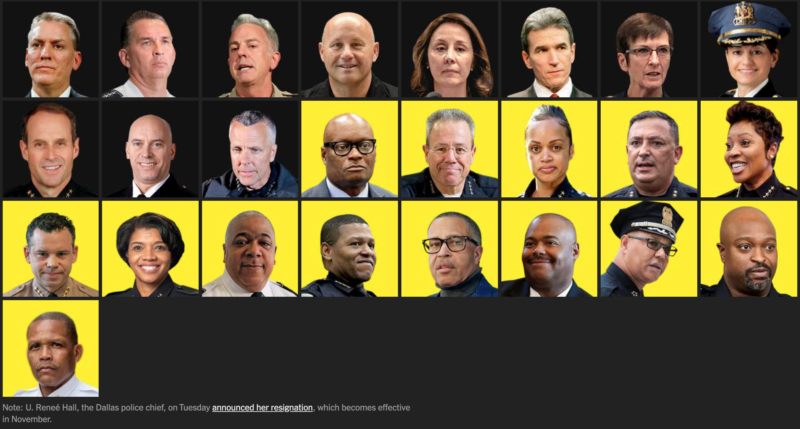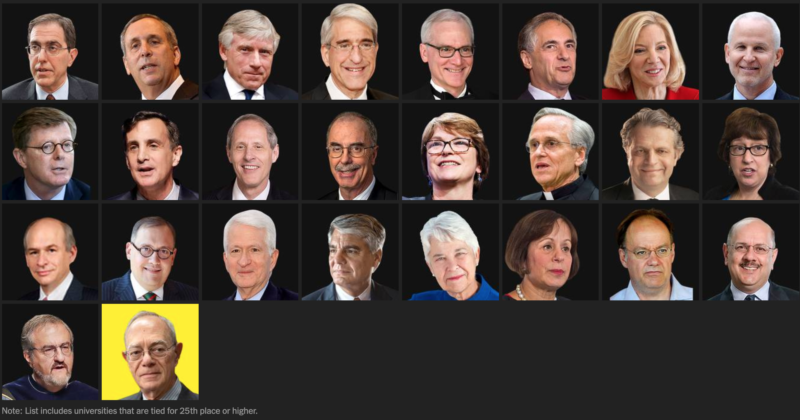Faces of Power: 80% Are White, Even as U.S. Becomes More Diverse
Share
Explore Our Galleries
Breaking News!
Today's news and culture by Black and other reporters in the Black and mainstream media.
Ways to Support ABHM?
These are 922 of the most powerful people in America. 180 of them identify as Black, Hispanic, Asian, Native American, multiracial or otherwise a person of color.
By Denise Lu, Jon Huang, Ashwin Seshagiri, Haeyoun Park and , New York Times
The most powerful people in the United States pass our laws, run Hollywood’s studios and head the most prestigious universities. They own pro sports teams and determine who goes to jail and who goes to war.
A review by The New York Times of more than 900 officials and executives in prominent positions found that about 20 percent identify as Black, Hispanic, Asian, Native American, multiracial or otherwise a person of color. About 40 percent of Americans identify with one of those groups.
Even where there have been signs of progress, greater diversity has not always translated to more equal treatment.
25 people command the largest police forces. 14 are Black or Hispanic.
While half of the 25 largest police forces are run by people of color, the shootings and killings of Black people by white officers this year are a painful reminder of systemic bias. The rise of people of color to positions of leadership has not been a guarantee against the targeting of marginalized groups.
8 men are military chiefs. 1 is Black.
The racial makeup of the Joint Chiefs of Staff stands in stark contrast to that of active-duty members, more than 40 percent of whom are people of color.
Of the people who head universities ranked in the top 25, 1 is Hispanic.
Among U.S. News and World Report’s 25 top-ranked universities, none have Asian or Black leaders and only one school has a Hispanic president. While the number of Asian students at elite schools has increased, Black and Hispanic students are less represented than they were a generation ago, government data shows….
Read the full article here.
More about the racial/ethnic power imbalance in the most diverse nation on the planet, here, here and here.














Comments Are Welcome
Note: We moderate submissions in order to create a space for meaningful dialogue, a space where museum visitors – adults and youth –– can exchange informed, thoughtful, and relevant comments that add value to our exhibits.
Racial slurs, personal attacks, obscenity, profanity, and SHOUTING do not meet the above standard. Such comments are posted in the exhibit Hateful Speech. Commercial promotions, impersonations, and incoherent comments likewise fail to meet our goals, so will not be posted. Submissions longer than 120 words will be shortened.
See our full Comments Policy here.